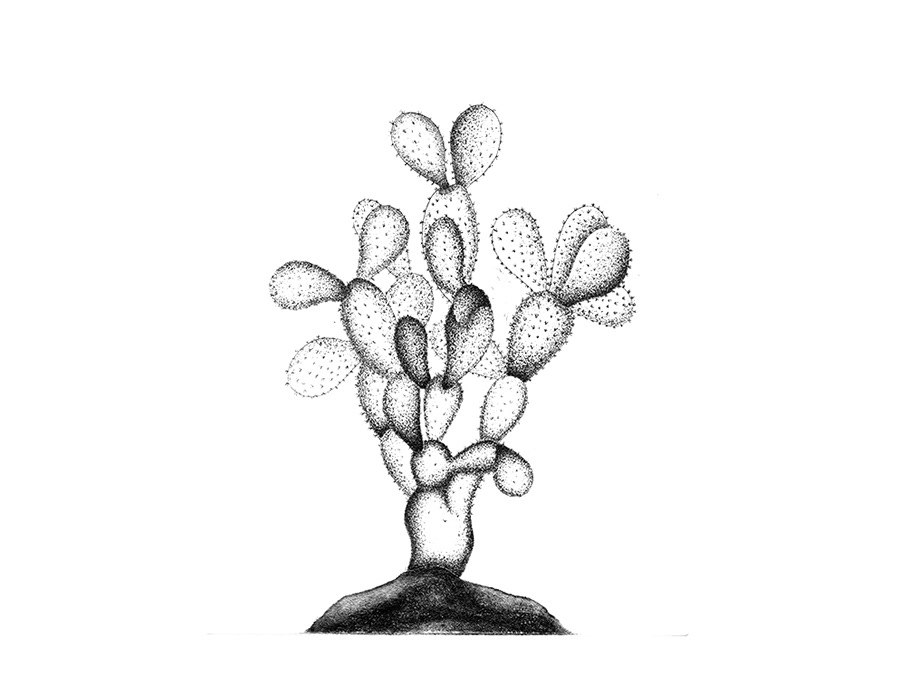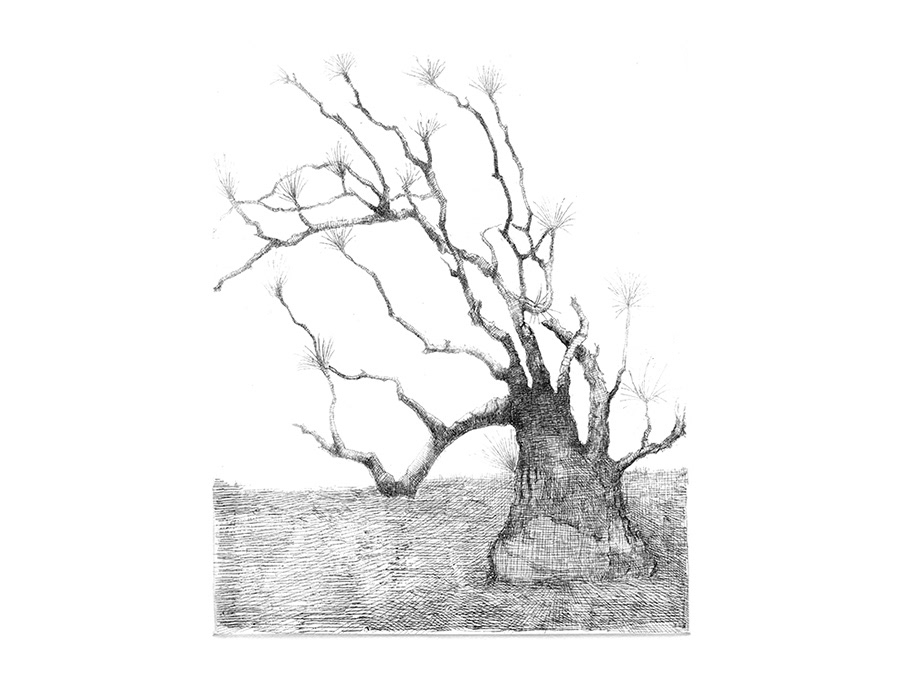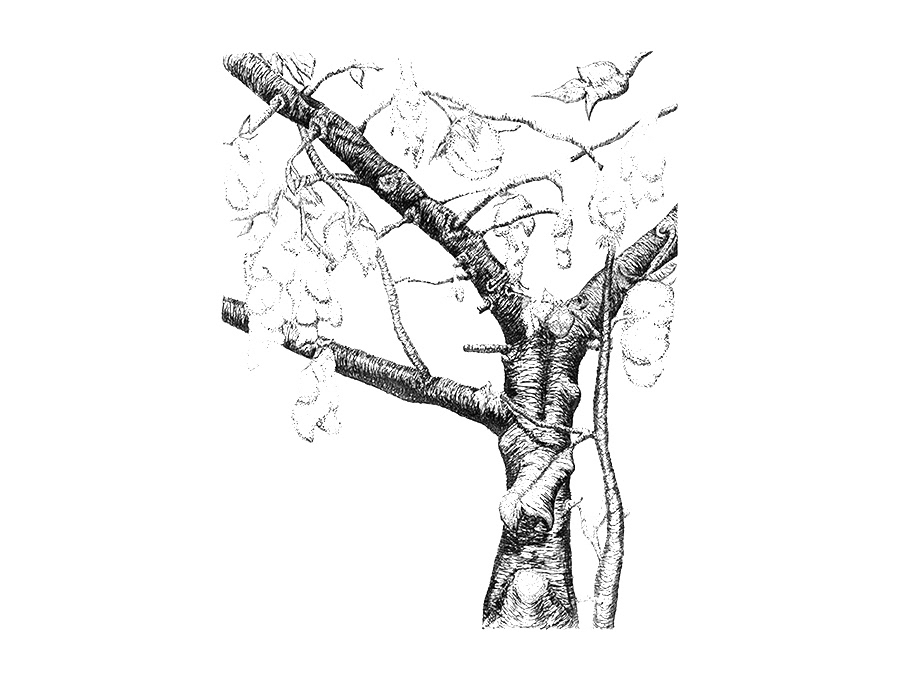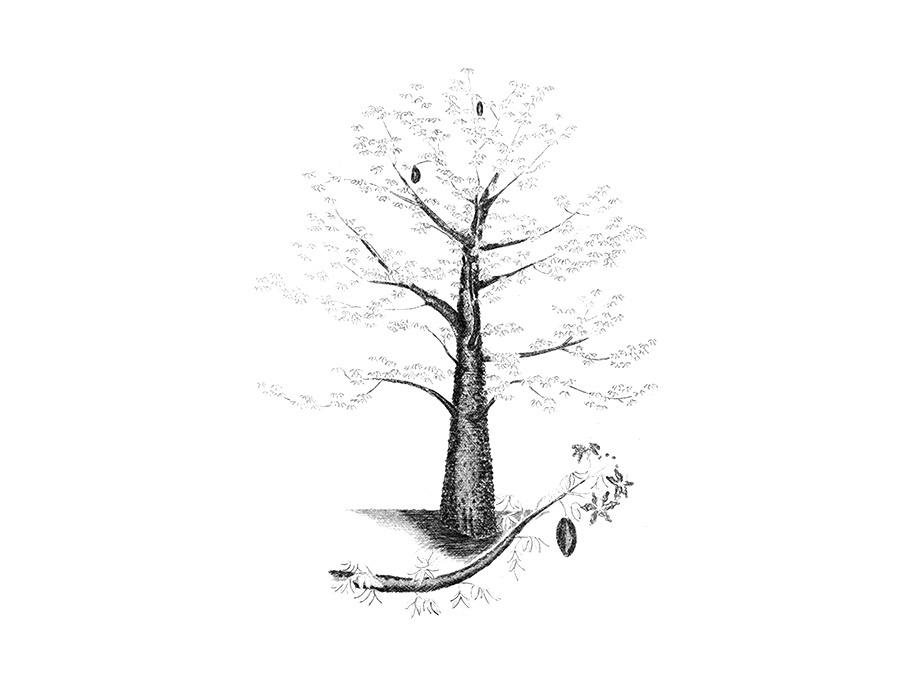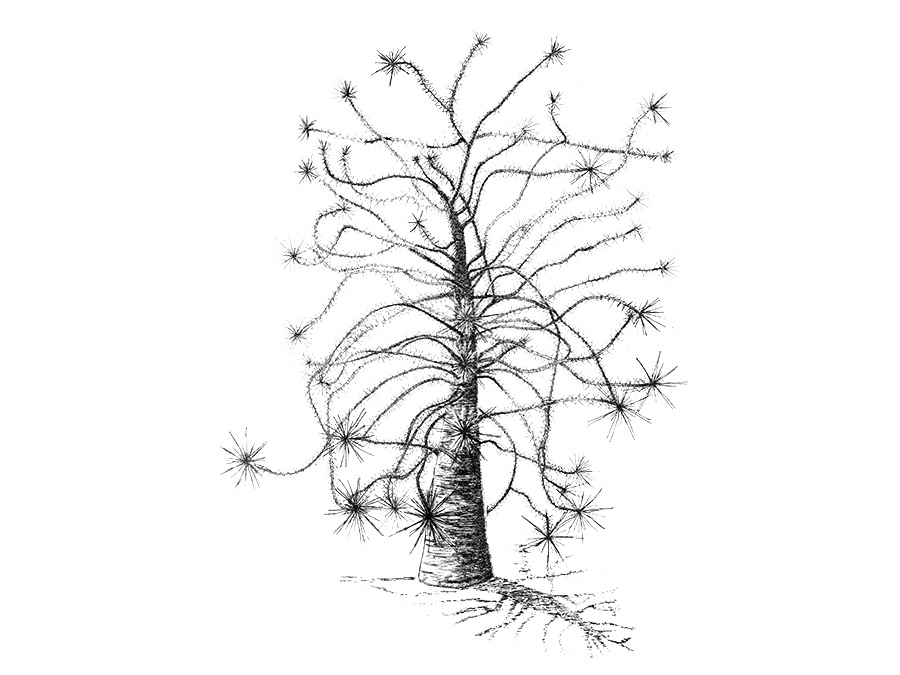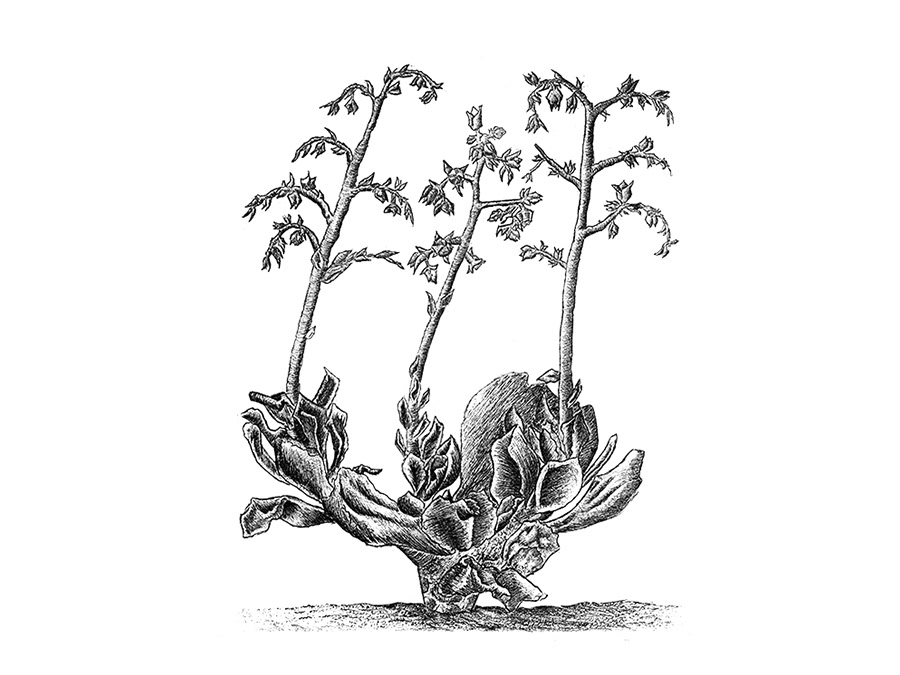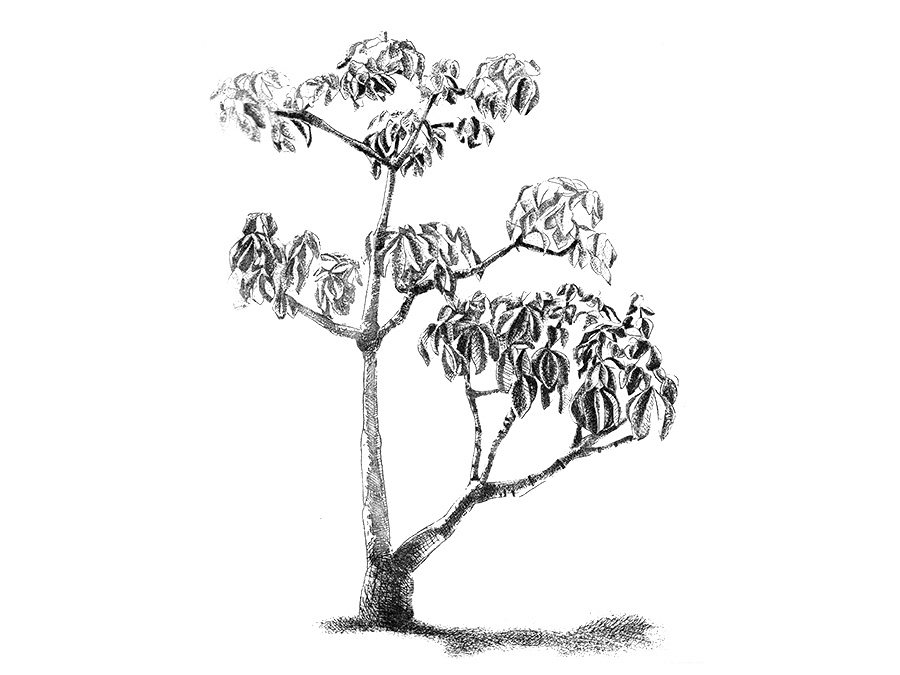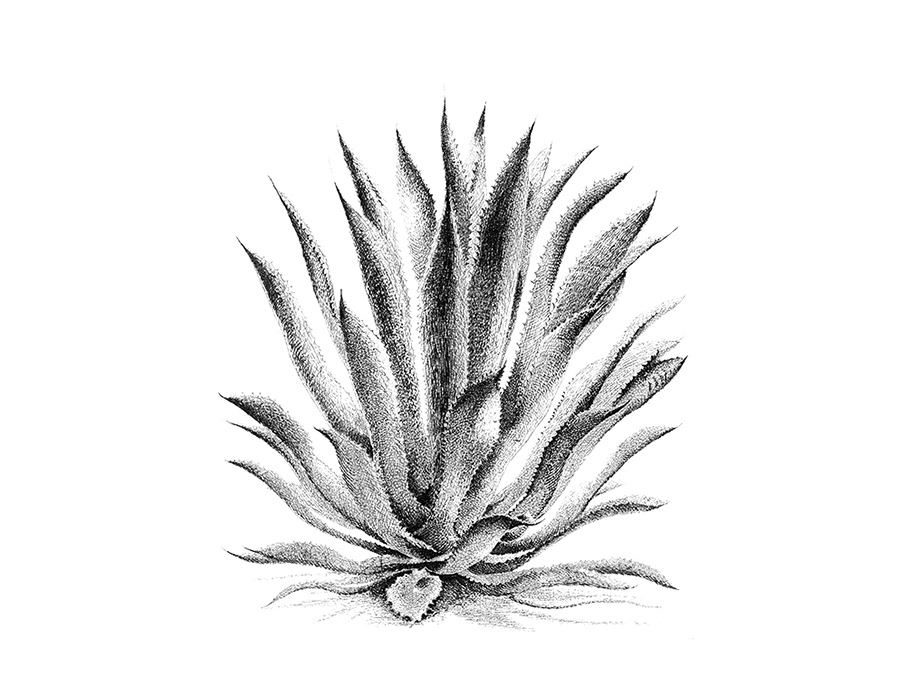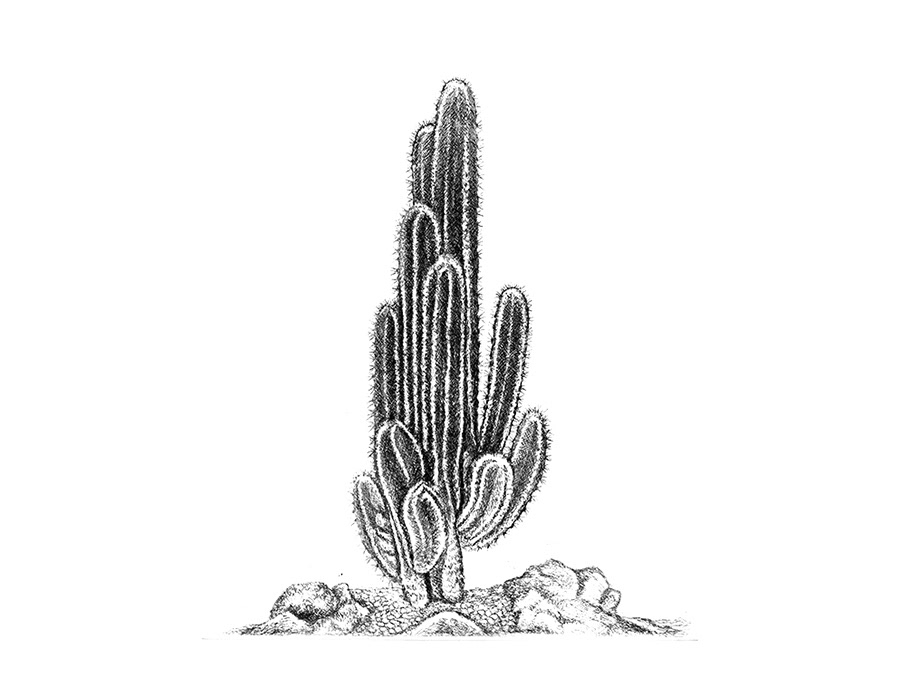Ferocactus latispinus
We found this cactus with fierce spines in communal lands of Santiago Quiotepec, in the Cañada de Cuicatlán. The twelve species illustrated in this folder were collected in the field after obtaining authorization from the communal or ejidal authorities of each site. In addition to donating the plants, various communities have provided stone, soil, and information. The Garden exists thanks to their contribution. In addition to these donations, we recently received a batch of 40 large specimens of Ferocadus latispinus that were illegally extracted in the Tlacolula Valley; federal authorities confiscated the plants and deposited them in the Garden for us to cultivate. The genus Ferocadus, with more than 20 species, is distributed from the southwestern United States of North America to Oaxaca. The flowers of one species from central Mexico are eaten boiled in pickles. The F. latispinus is one of the cacti that are peeled and cooked in sugar to make "dulce de acitrón" in the Istmo de Tehuantepec, a custom that has destroyed complete populations. The plants grow solitarily, unlike other species of the same genus that form large colonies. Adult specimens reach about 30 centimeters in height. They are part of dry tropical forests and thorny shrubs from Oaxaca to San Luis Potosí and Zacatecas. The illustrated plant was previously classified as F. recurvus, which specialists now consider a synonym of F. latispinus; in other words, the criteria previously followed to distinguish two species do not seem to reflect significant genetic differences. Cacti exhibit a special mechanism of photosynthesis, a process in which plants harness sunlight to produce sugars, starch, and other carbohydrates from water and carbon dioxide in the air, converting light energy into chemical energy. In this family, the chemical reactions to fix carbon dioxide are separated from the rest of the cycle, where carbohydrates are synthesized. This dissociation allows them to conserve water: cacti open their stomata (plant pores for gas exchange) during the night when lower temperatures and higher humidity reduce dehydration. They fix carbon dioxide in the darkness and synthesize carbohydrates with closed stomata during the day. This form of photosynthesis is a physiological adaptation to survive in arid environments. It is called Crassulacean Acid Metabolism (CAM) because it was first studied in the 'deer's ear' family. Other groups that exhibit CAM include agaves, orchids, bromeliads (pineapple family), and some Euphorbiaceae (poinsettia family). The CAM cycle is less efficient than other forms of photosynthesis, and plants that follow it have slower growth rates. This partly explains their vulnerability: a high percentage of the species included in NOM-059 are CAM plants. Thanks to Dr. Jerónimo Reyes Santiago of the UNAM Botanical Garden for identifying this species. Bibliography: • Bravo Hollis, Helio, and Hernando Sánchez Mejorada 1991 The Cactaceae of Mexico, Vol. 11. UNAM, Mexico City. • Valles Septién, Carmen, et al. 1997 Mexican Succulents: Cactaceae. CONABIO, SEMARNAP, and UNAM, Mexico City.
You may also like
